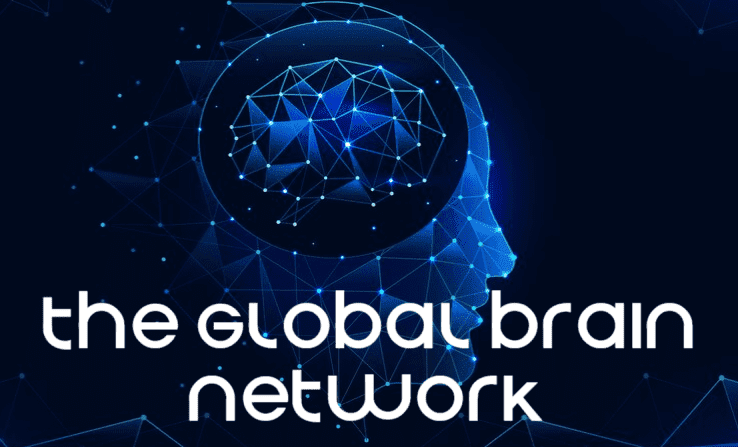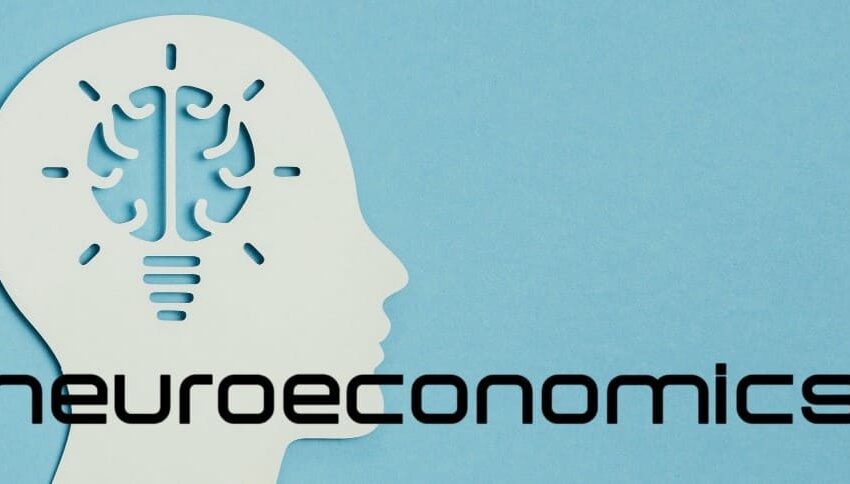
Overview:
The Global Brain Network represents a paradigm shift in how humanity harnesses collective intelligence and digital connectivity to address complex global challenges. At its core, this concept envisions a networked intelligence akin to the human brain, where interconnected systems and collaborative efforts across borders amplify our collective capacity for innovation and problem-solving. Initiatives such as the International Brain Initiative (IBI), BRAIN Initiative 2.0, and collaborative data-sharing platforms epitomize this global effort, uniting researchers worldwide in unraveling the mysteries of brain function and advancing treatments for neurological disorders.
Driven by advancements in neuroscience, artificial intelligence (AI), and data science, the Global Brain Network extends beyond traditional research paradigms. Projects like Wikipedia, where millions collaboratively curate a vast repository of knowledge, and AI innovations such as OpenAI’s GPT-4 and Google’s DeepMind exemplify how digital technologies empower collective knowledge sharing and transformative research capabilities. As these initiatives converge, they not only accelerate scientific discovery but also lay the groundwork for a future where interconnected intelligence networks enhance decision-making, healthcare outcomes, and societal well-being on a global scale.
Contents:
- What is the Global Brain Network
- Key elements of the Global Brain Network
- Key applications of the Global Brain Network
- Potential Challenges and Risks with the Global Brain Network
- Key initiatives taken for the Global Brain Network
- Summing Up
So, what is the Global Brain Network:
The Global Brain Network is a conceptual framework that envisions the internet and other communication technologies as forming a collective intelligence system, akin to a global brain. It draws parallels between the neural networks of the human brain and the interconnected digital and human networks across the globe.
Key elements of the Global Brain Network:
1. Interconnectivity:
Digital Communication: The proliferation of internet-enabled devices (smartphones, computers, IoT devices) and platforms (social media, messaging apps) facilitates instantaneous communication and data exchange across the globe.
Network Infrastructure: High-speed internet, satellite communications, and wireless technologies provide the backbone for this connectivity, enabling seamless interactions regardless of geographic location.
Global Reach: The network’s interconnectivity extends to diverse fields including education, healthcare, business, and entertainment, fostering a globally integrated society.
2. Collective Intelligence:
Crowdsourcing: Platforms like Wikipedia, GitHub, and various forums allow individuals to contribute knowledge, solve problems, and develop projects collaboratively, leveraging the collective expertise of a global community.
Open Data: The sharing of large datasets and research findings enables collaborative analysis and innovation, driving advancements in science, technology, and policy-making.
Distributed Decision-Making: The wisdom of the crowd can lead to more robust and democratic decision-making processes, often yielding better outcomes than top-down approaches.
3. Self-Organization:
Decentralized Systems: Blockchain technology and peer-to-peer networks exemplify decentralized systems that self-regulate without central authority, promoting transparency and resilience.
Adaptive Algorithms: Machine learning and AI algorithms adapt and optimize themselves based on the data they process, similar to how neural networks in the brain strengthen and prune synapses based on experience.
Dynamic Networks: Social media platforms and online communities continuously evolve, with user interactions shaping the content and structure of the networks.
4. Emergent Properties:
Innovation Ecosystems: The convergence of diverse disciplines and perspectives within the network fosters innovation, leading to the emergence of new technologies, business models, and cultural phenomena.
Complex Behaviors: The interactions within the network can lead to unexpected and sophisticated behaviors, such as viral trends, market fluctuations, and social movements.
Global Awareness: The network can create a shared sense of global identity and purpose, as information about global issues and events becomes widely accessible and actionable.
5. Feedback Loops:
Real-Time Data: Sensors, social media, and other data sources provide real-time information that can be used to monitor and respond to changing conditions, such as natural disasters, market trends, and public health emergencies.
Iterative Improvement: Feedback from users and data analytics can drive continuous improvement in products, services, and policies, creating a cycle of refinement and innovation.
Behavioral Influence: The network can influence individual and collective behavior through targeted information, incentives, and social norms, creating feedback loops that drive societal change.
These key elements together form a dynamic, interconnected, and intelligent global system that mirrors the complexity and capabilities of a biological brain, but on a planetary scale. The Global Brain Network represents a vision of how humanity and technology can co-evolve to create a more intelligent and connected world.
Key applications of the Global Brain Network:
1. Healthcare:
Global Disease Surveillance: Using interconnected health data from around the world to track and predict disease outbreaks, enabling rapid response and containment.
Collective Medical Research: Facilitating global collaboration in medical research, where scientists share data and insights in real-time to accelerate discoveries and innovations in treatments and cures.
AI-Driven Diagnostics: Utilizing global datasets to train AI systems that can provide accurate diagnostics and personalized treatment recommendations, accessible to healthcare providers worldwide.
2. Education:
Global Learning Networks: Creating a network where students and educators from different parts of the world collaborate and share resources, fostering a global exchange of knowledge and skills.
Adaptive Learning Systems: Developing AI-driven platforms that adapt to the learning needs of students by analyzing data from diverse educational contexts worldwide.
Crowdsourced Curriculum Development: Engaging educators and experts globally to develop and refine curricula based on best practices and innovative teaching methods.
3. Business and Economics:
Global Innovation Hubs: Establishing interconnected hubs that facilitate the exchange of ideas, research, and development efforts across borders, driving global innovation.
Distributed Economic Forecasting: Using real-time data from various markets to create accurate economic forecasts and models that benefit from collective intelligence.
Blockchain for Global Trade: Implementing decentralized blockchain systems to enhance transparency and efficiency in international trade and supply chains.
4. Environmental Monitoring and Sustainability:
Global Environmental Data Network: Integrating environmental data from sensors and satellites worldwide to monitor and address global environmental challenges collaboratively.
AI-Powered Sustainability Solutions: Using AI trained on global environmental data to develop solutions for resource management, climate change mitigation, and biodiversity conservation.
Crowdsourced Environmental Initiatives: Mobilizing global communities to participate in sustainability projects and initiatives through online platforms.
5. Governance and Public Policy:
Global Policy Collaboration Platforms: Creating digital platforms where policymakers, researchers, and citizens worldwide can collaborate on policy development and implementation.
Real-Time Governance Feedback Systems: Utilizing data from citizens globally to provide real-time feedback to governments, enhancing responsiveness and transparency.
Global Crisis Response Network: Coordinating international disaster response efforts through a unified network that leverages collective intelligence and real-time data sharing.
6. Scientific Research and Innovation:
Global Research Collaboratories: Establishing virtual research environments where scientists from different countries can work together seamlessly, sharing data and resources.
Collective Scientific Databases: Building comprehensive databases that aggregate research findings from around the world, making knowledge accessible and actionable.
Interdisciplinary Global Projects: Facilitating interdisciplinary projects that address complex global challenges, leveraging expertise and data from multiple fields and regions.
7. Social and Cultural Development:
Global Cultural Exchange Platforms: Enabling people to share and experience diverse cultures through interconnected digital platforms, fostering global understanding and collaboration.
Digital Social Movements: Coordinating global social and political movements through online networks, amplifying voices and organizing actions across borders.
Global Arts Collaboratives: Creating digital spaces where artists from around the world can collaborate, share, and innovate, enriching global culture.
8. Security and Defense:
Global Cyber Threat Intelligence Network: Developing a global network for sharing cyber threat intelligence, enhancing collective defense against cyberattacks.
Interconnected Peacekeeping Operations: Using real-time data and communication technologies to support and coordinate international peacekeeping and conflict resolution efforts.
Collaborative Intelligence Analysis: Leveraging collective intelligence to analyze and respond to security threats, involving experts from various regions and disciplines.
Potential Challenges and Risks with the Global Brain Network:
1. Privacy and Security:
Data Privacy: With vast amounts of personal data being shared and analyzed, protecting individuals’ privacy becomes a significant concern. Unauthorized access and misuse of data can lead to identity theft, surveillance, and loss of personal freedom.
Cybersecurity: The interconnected nature of the Global Brain Network makes it susceptible to cyberattacks. A breach in one part of the network could have cascading effects, compromising sensitive information and critical infrastructure.
2. Digital Divide:
Access Inequality: Not everyone has equal access to the internet and digital technologies. This disparity can exacerbate existing inequalities, leaving behind those in underdeveloped regions or marginalized communities.
Knowledge Gaps: The difference in digital literacy levels can create gaps in who can effectively participate and benefit from the Global Brain Network, limiting its potential for inclusive collective intelligence.
3. Dependence on Technology:
Systemic Vulnerability: Heavy reliance on digital networks and AI systems can make societies vulnerable to technological failures or disruptions. Systemic failures could impact everything from healthcare to finance.
Erosion of Skills: Overdependence on technology for decision-making and problem-solving might lead to the erosion of critical thinking and problem-solving skills among individuals.
4. Ethical Concerns:
Bias and Discrimination: AI and algorithms used within the network may perpetuate or even exacerbate existing biases if not carefully managed. This can lead to discriminatory practices and outcomes.
Autonomy and Control: As the network grows, questions arise about who controls the data and the algorithms. There is a risk of power being concentrated in the hands of a few large corporations or governments.
5. Misinformation and Manipulation:
Spread of False Information: The network can amplify the spread of misinformation and fake news, which can have serious societal impacts, such as undermining public trust and influencing elections.
Manipulation: Bad actors can exploit the network to manipulate public opinion, conduct cyber warfare, or engage in other malicious activities.
6. Environmental Impact:
Resource Consumption: The infrastructure supporting the Global Brain Network, including data centers and communication networks, consumes significant amounts of energy and resources, contributing to environmental degradation.
Electronic Waste: Rapid technological advancements lead to frequent upgrades and disposal of electronic devices, creating a growing problem of electronic waste.
7. Governance and Regulation:
Global Coordination: Developing effective governance and regulatory frameworks that work across national borders is challenging. Differences in laws, regulations, and standards can create conflicts and loopholes.
Accountability: Ensuring accountability in a decentralized and vast network is difficult. Determining responsibility in cases of data breaches, misinformation, or system failures can be complex.
Key initiatives taken for the Global Brain Network:
1. The International Brain Initiative (IBI):
The IBI was formed to coordinate global brain research projects, such as the Brain Research through Advancing Innovative Neurotechnologies (BRAIN) Initiative in the US, the Human Brain Project in the EU, and the Brain/MINDS program in Japan.
Goals:
The IBI aims to reduce the burden of neurological and mental health disorders worldwide through collaborative, multidisciplinary brain research and capacity building.
Impact:
By fostering international cooperation, the IBI enhances the sharing of knowledge, resources, and technologies, accelerating progress in brain research and ensuring that advancements benefit people globally.
2. The BRAIN Initiative 2.0:
An expansion of the original BRAIN Initiative launched by the US government in 2013, focusing on advancing technologies, integrating data, and translating discoveries to tackle brain disorders.
Key Priorities:
Discovering Brain Cell Diversity: Mapping the diverse cell types in the brain to understand their functions and interactions.
Mapping the Brain at Multiple Scales: Creating detailed maps of brain circuits and networks at various levels of resolution.
Demonstrating Causality Between Brain Activity and Behavior: Establishing direct links between neural activity and specific behaviors to understand brain function and dysfunction.
Impact:
The initiative drives technological innovation and provides a framework for integrating diverse data sources, leading to more effective treatments for neurological and mental health disorders.
3. Global Data and Methods Sharing:
Establishing worldwide data and methods portals with common data standards to drive international collaboration in brain research.
Key Components:
Data Portals: Platforms like the Neuroscience Information Framework (NIF) and the Allen Brain Atlas provide access to vast datasets and research tools.
Common Data Standards: Developing and adopting standardized protocols for data collection, storage, and sharing to ensure interoperability and reproducibility.
Impact:
Sharing novel technologies and pooling data from diverse sources accelerates progress in understanding the complex human brain and facilitates collaborative research efforts.
4. Multidisciplinary and Translational Research:
Integrating basic and clinical brain research and leveraging expertise across disciplines for the success of global brain initiatives.
Approach:
Basic Research: Understanding fundamental brain processes through neuroscience, genetics, and cognitive science.
Clinical Research: Applying basic research findings to develop new treatments and interventions for brain disorders.
Cross-Disciplinary Collaboration: Combining insights from fields such as computer science, engineering, psychology, and pharmacology to enhance research outcomes.
Impact:
This approach leads to more impactful discoveries and clinical applications, bridging the gap between laboratory research and patient care.
Summing Up:
The Global Brain Network epitomizes a visionary stride towards harnessing collective intelligence and digital connectivity on a global scale. Initiatives like the International Brain Initiative (IBI) and BRAIN Initiative 2.0 exemplify concerted international efforts to delve into the complexities of brain function and address neurological challenges through multidisciplinary collaboration. These initiatives not only aim to map brain circuits and advance technologies but also emphasize the integration of diverse scientific insights to propel innovations in healthcare and beyond.
Supplementary endeavors such as Wikipedia’s collaborative knowledge repository, OpenAI’s transformative language models like GPT-4, and Google’s pioneering AI research at DeepMind underscore the transformative potential of collective intelligence and AI technologies in driving global knowledge sharing and scientific discovery. However, realizing the full potential of the Global Brain Network necessitates navigating challenges such as privacy protection, digital equity, and ethical considerations surrounding data use. With mindful stewardship, the Global Brain Network promises to revolutionize research capabilities, foster global collaboration, and pave the way for a more interconnected and informed future where advancements benefit societies worldwide.











